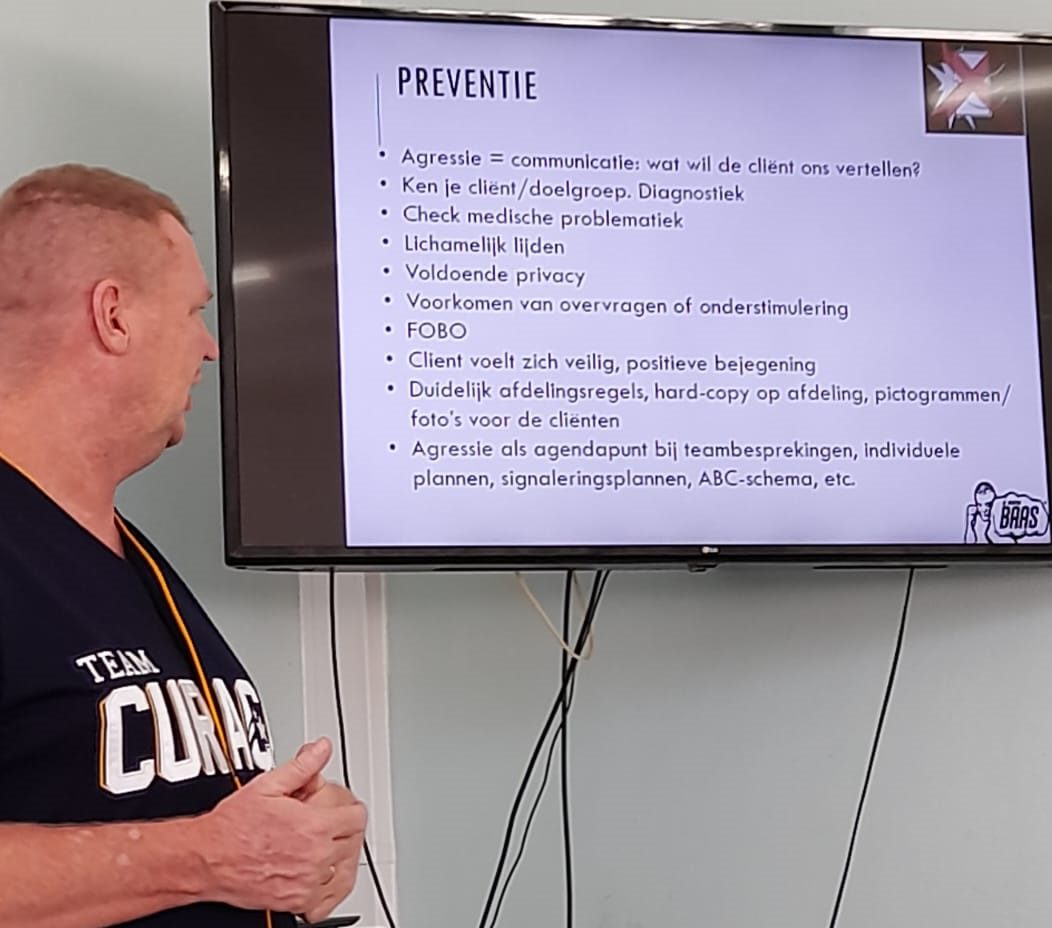Edwin Baas has experience in providing Aggression Management training at schools, healthcare institutions, youth services, special care, security companies, etc. in; Curaçao, Bonaire, Aruba, Sint Maarten and The Netherlands.
“Agressie de Baas (be the boss of aggression)” focuses on gaining more self-confidence (no false sense of security) and skills of the participants in dealing with aggression, resulting in more safety. The techniques are adapted to the type of attacker and situation.
Correctly handling aggressive behavior is not an easy job. Often people react out of their own fear or tension.
Realize that you can never be prepared for everything and that sometimes you cannot prevent violence.
Through this training one can learn to react more skillfully in situations, in order to get out of such a confrontation better and with less damage. One learns to control oneself, the ability to recognize danger already at the beginning or even see it coming. This makes it easier to assess threatening situations and react appropriately immediately.
Some of the subjects:
– Definition of Aggression, Expressions of aggression, Forms of aggression to motivation
– Basic emotions, Understanding anger, From anger to aggression, Stages of aggression
– Prevention, Warning indicators, Personal Safety, Scene Safety
– Verbal interventions, De-escalation in reactive aggression and in proactive aggression
– Posture, position, distance, etc.
– Adapt techniques, Collaboration, Gross motor actions, Biomechanics and Anatomy, Physical strength, Surprise effect, Tools/environment, Verbal support
– Releases from grasping by the throat, wrist, hair, clothes, defending against hitting, punching, kicking, pushing, attacking with (sharp) objects, and other Physical attacks/threats.
– Physical interventions, for example; separate two fighting clients, restraints and control techniques.
There are various forms in which this training is offered, such as; an introductory training, a workshop/ clinic (half or full day) or a course (several meetings on different days).

